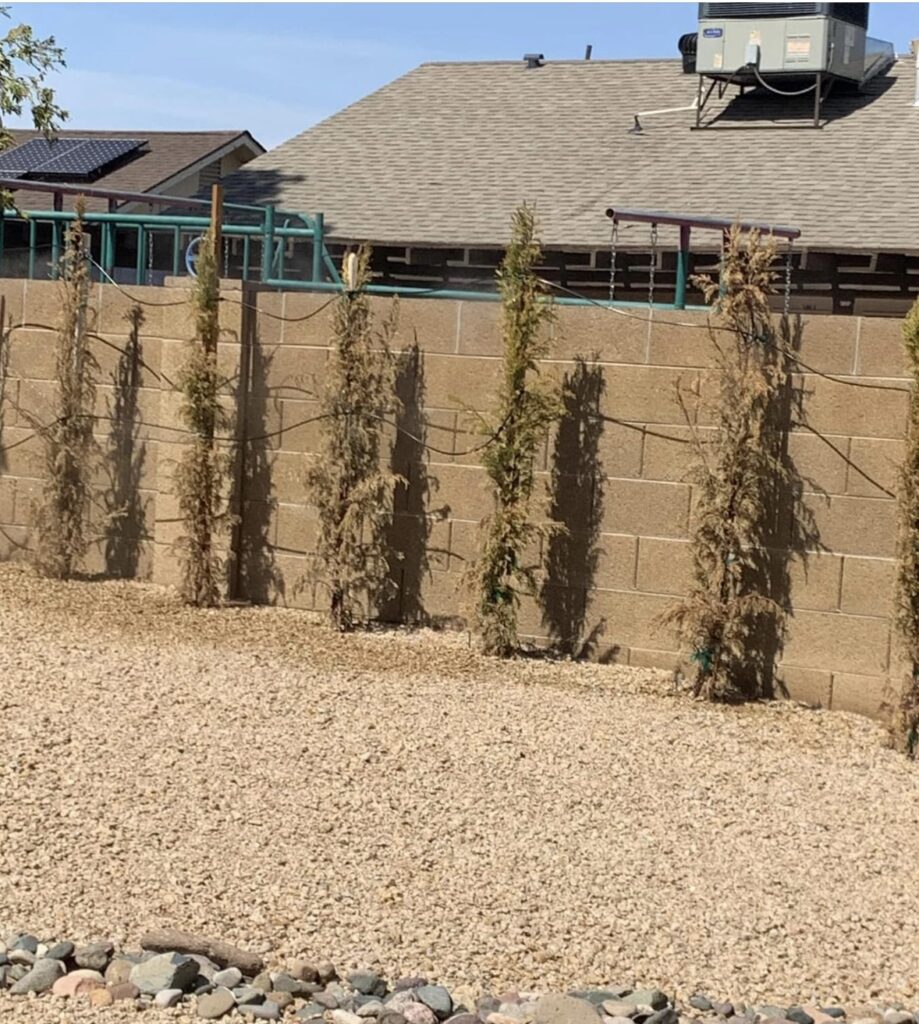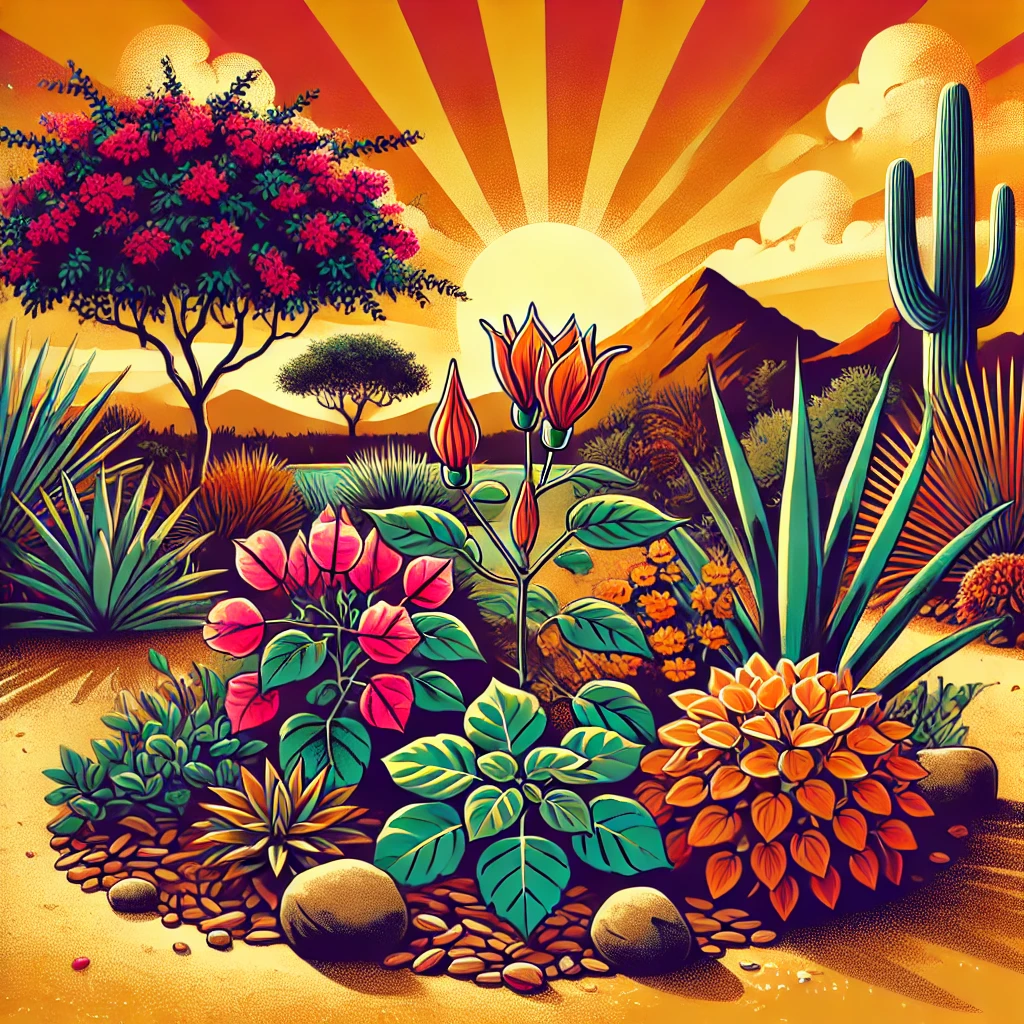Check out this picture: Someone recently shared this image of their newly planted hedge of cypress columns in a local gardening group. These plants, unfortunately, look like they’ve been through a desert inferno—dried up, brown, brittle, and most importantly, dead. The owner is frantically asking for advice on how to save them. The harsh truth? Nothing can be done; they’re beyond saving. Even if they replanted those cypress 100 times, 99 of them would meet the same fate. Why? Because they were planted in the wrong place with the wrong conditions.

This unfortunate scenario could have been avoided with one key principle: right plant, right place. It sounds simple, but it’s a concept that can save time, effort, and a lot of money. The mistake made here was planting cypress in a yard covered with hot granite rock and right up against a block wall. In Arizona’s intense sun and heat, these plants never stood a chance. No amount of water or attention could have saved them because their environment was incompatible with their needs. (please note: I’m not using this picture to call out this person, simply using it to help teach a lesson)
The Danger of Impulse Planting
Many people see a bare patch in their yard and decide they want a particular plant to fill it. They head to the nursery, pick the one that looks the most attractive, and plant it—without thinking about the conditions it needs to thrive. A drip line might be added, and then the gardener steps back, expecting it to grow effortlessly. But in a few weeks, that plant is dead, and the gardener is left frustrated, complaining about how “nothing grows in Arizona.” But it’s not the environment or the plant’s fault; it’s a matter of not doing enough research beforehand.
Do Your Homework
Gardening in any harsh climate requires careful planning and research. Before planting anything, ask yourself the following:
- Sunlight: How much sun will this spot receive throughout the day and across the seasons? Morning sun is different from afternoon sun, especially in summer. Some plants thrive in partial shade, while others demand full sun to survive.
- Soil: Is the soil compacted or friable? Does it drain well, or does water sit on the surface for hours? Is there life in the soil to support and feed the plant?
- Microclimate: What kind of microclimate does the area have? Is it near a heat-radiating block wall, like the unfortunate cypress columns, or surrounded by cooler, shaded ground?
- Wind: Is there frequent wind exposure, which could stress the plant further?
- Water Requirements: How much water will the plant need, and is your irrigation system set up to meet those needs?
These factors play a significant role in how well a plant will perform. Ignoring them is a recipe for frustration, wasted money, and dead plants.
Create a Microclimate for Success
One of the most satisfying parts of gardening is creating a successful, thriving microclimate over time. (what is a microclimate???) When you choose the right plant for the right place, it doesn’t just survive—it thrives. Over time, as your plants grow and establish themselves, they create a more favorable environment for future plantings. Shade trees, for instance, can reduce the heat intensity for smaller plants beneath them, and organic mulch can improve soil moisture and temperature.
Had the homeowner done some research, they could have chosen plants better suited to those conditions, such as Bougainvillea, Barbados Cherry, or Moringa. These are heat-loving options that would have flourished against a block wall, even in hot granite ground cover.
Another option would have been to modify the environment by replacing the hot granite rock with a more plant-friendly ground cover, such as wood chips. This change would have made the area cooler and less reflective, improving the growing conditions significantly.
Functionality, Aesthetics, and Environmental Needs
When choosing plants, always consider three main aspects:
- Functionality: Why are you planting this? Do you want a tree that gives fruit, windbreak, privacy screen, or perhaps a focal point?
- Aesthetics: What do you want it to look like? Consider the color, texture, and growth habit to ensure it fits the overall design of your garden. Remember, plants grow, what it looks like now is not what it will look like in 5 years.
- Environmental Needs: This is the most important. What conditions does this plant need to not just survive, but thrive? Sun exposure, water, soil type, and temperature all come into play.
In the end, it’s not about Arizona being too hot for gardening. Almost any type of plant can be grown successfully when the proper variety is selected and planted at the right time. The key is understanding that the environment isn’t at fault—it’s the gardener’s responsibility to match plants to the right conditions.
Final Thoughts: Don’t Make Gardening Harder Than It Needs to Be
Gardening doesn’t have to be a game of trial and error if you do your research. By focusing on the principle of “right plant, right place,” you set yourself up for long-term success. Avoid the frustration of seeing plants die by taking the time to learn about both the plant and the spot where you’re putting it. When you match them correctly, you’ll be rewarded with a garden that’s not only beautiful but also resilient, even in the challenging Arizona desert.
So, before you make another trip to the nursery, remember: a little research can go a long way. Your plants will thank you, and you’ll save yourself from a lot of unnecessary heartache.
